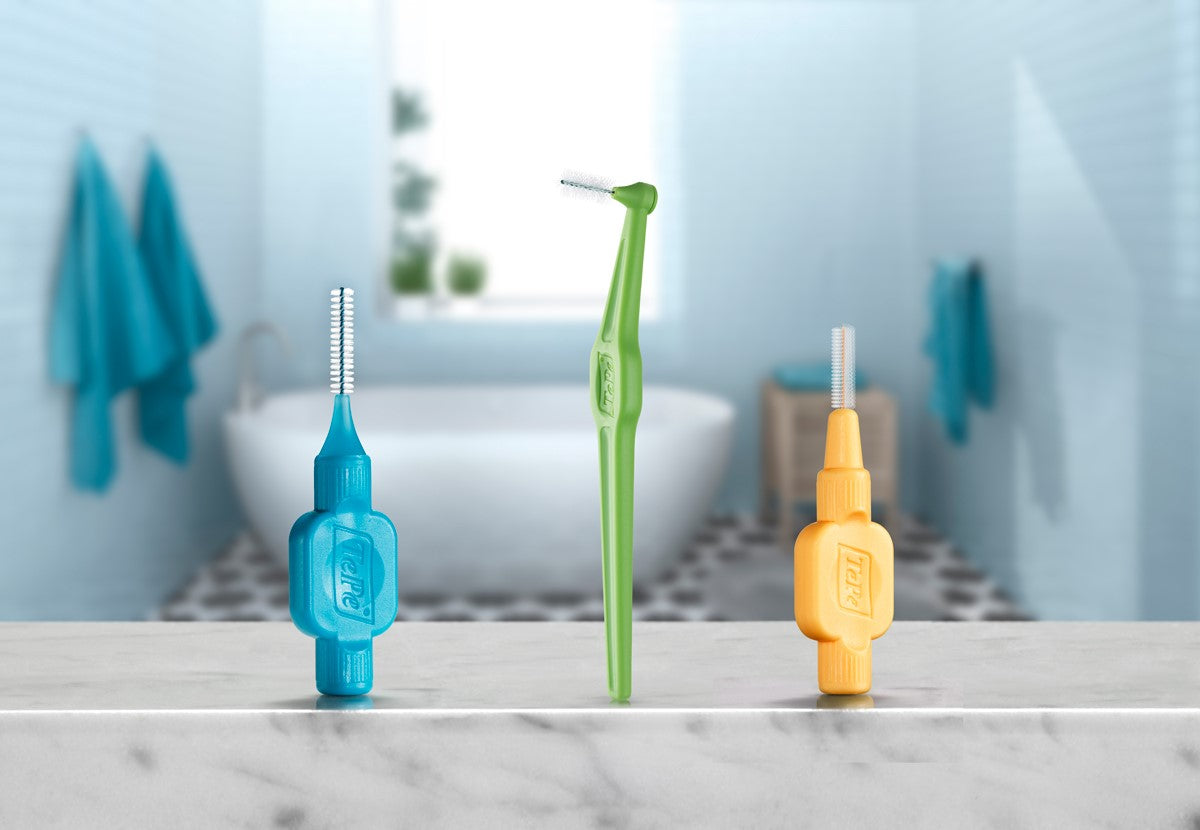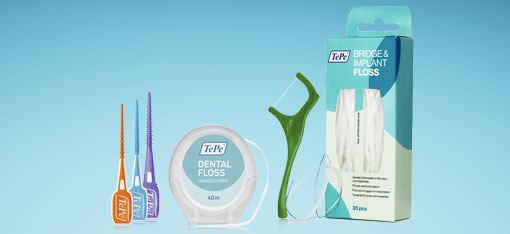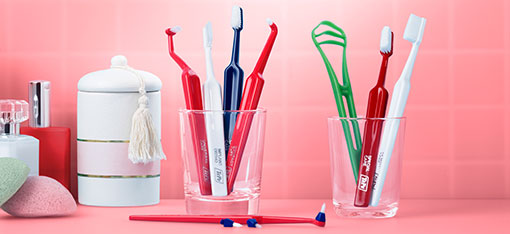Peri-Implantitis
What is peri-implant disease?
Around 40% of all adults suffer from periodontitis – often without knowing it. The disease develops slowly and often without pain or visible signs. The sooner it is diagnosed and treated, the better.

Healthy gums
Healthy gums do not bleed or hurt when you crean around your implants.

Peri-implant mucositis
Peri-implant mucositis means that there is an inflammation in the gums around the implants. This disease causes redness and swelling, but is not always very obvious. Your gums can be sensitive and even bleed when you clean around your implants.
The implant is attached to the bone (osseointegration). The gum tissue covers the bone and is formed around the implant like a collar. The small crevice between implant and gums is called the sulcus.

Bacterial plaque is a sticky film that constantly forms on your teeth and implants. If you do not clean them properly, the plaque builds up on the implants, especially along the gumline, and can cause gum inflammation (peri-implant mucositis).
Peri-implantitis

If the plaque is not removed it continues to grow in the sulcus, where it is impossible to reach with a toothbrush or interdental brush. The plaque hardens into tartar which has a rough surface that attracts more plaque. In time, the bone around the implant will start to break down, meaning that the implant gradually loses its attachment. The peri-implant mucositis has developed into peri-implantitis.

If the plaque is not removed it continues to grow in the sulcus,where it is impossible to reach with a toothbrush or interdental brush. The plaque hardens into tartar which has a rough surface that attracts more plaque. In time, the bone around the implant will start to break down, meaning that the implant gradually loses its attachment. The peri-implant mucositis has developed into peri-implantitis.
Prevention and treatment
You can prevent peri-implant disease through good oral hygiene. Bleeding on brushing and red, swollen gums are signs of inflammation, but the symptoms may not be very obvious.
If you suspect an inflammation, contact your dental professional. Professional treatment includes deep cleaning and removal of plaque and tartar. You will also learn how to care properly for your implants at home.
Your dental professional is there to help you achieve a high standard of oral hygiene. Regular checkups in combination with your own home care are important to prevent the disease from returning.
Informational Material
Download our patient leaflet Gum inflammation and periodontitis.












